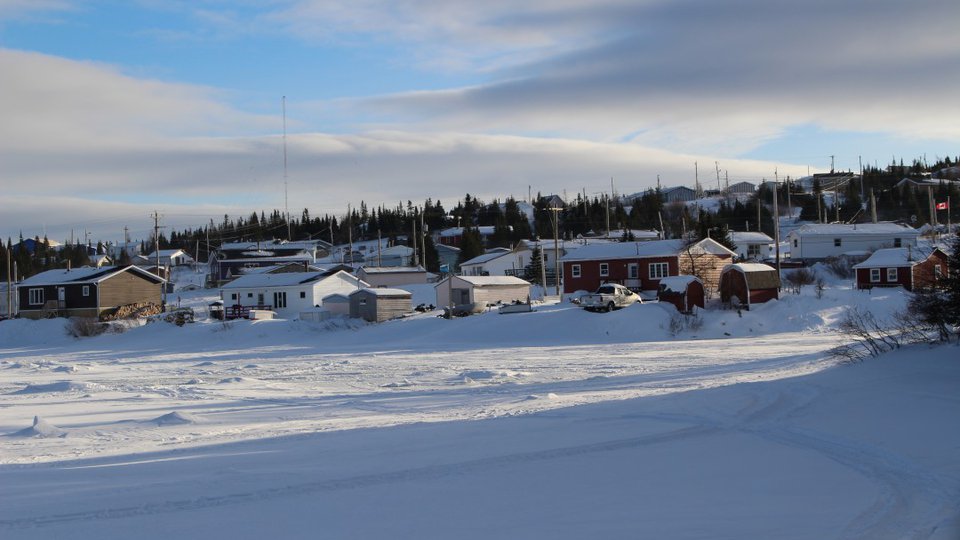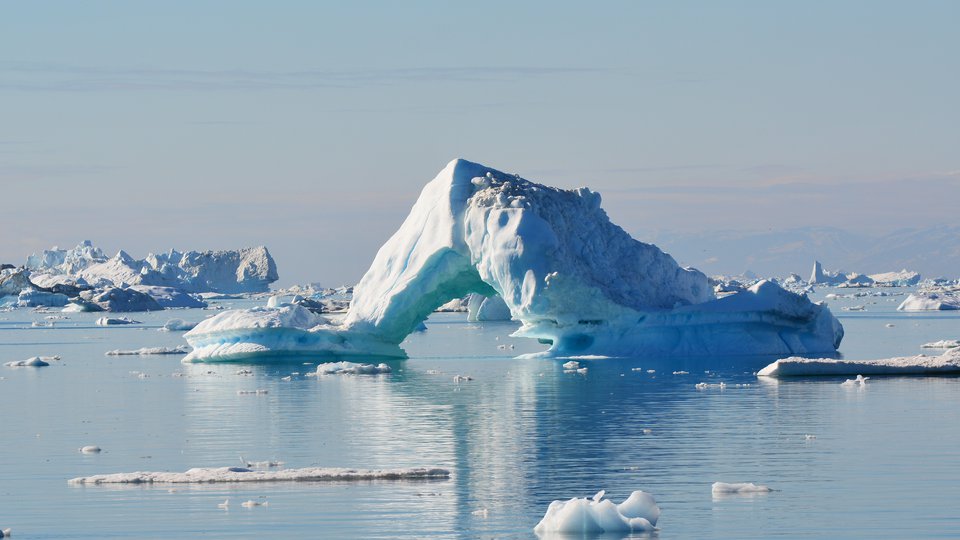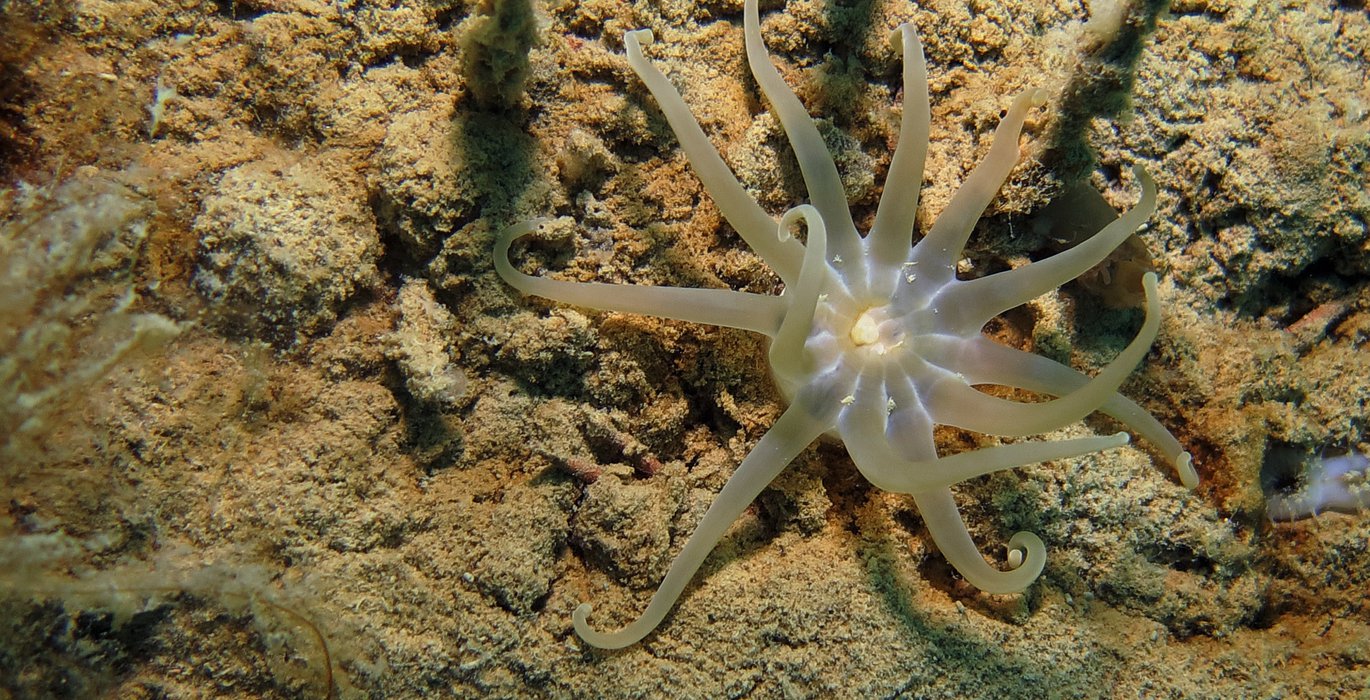
e are approaching the ice edge – that special moment on every Arctic expedition. The wind is still howling, but the waves are smaller, the boat’s rocking and rolling diminishes; our stomachs can relax. After passing swiftly through small and scarce floes, we slow down as we are now in heavier ice cover, looking for leads where our ice-strengthened vessel may pass.
The color of the horizon changes from deep ocean-blue to white-grayish ice-and-snow color. Those white floes of frozen salt water slowly move around us, pushed by wind and current. The clonking sound they make when bumping into the double-layered metal hull reminds us that we are not invincible. A first few puddle-sized melt ponds are scattered across the frozen seascape and shimmer in shades of tropical turquoise – summer melt is approaching here, between Herald Shoal and Herald Canyon, east of Wrangel Island in the northwestern Chukchi Sea.
Broken ice floes are turned upside-down as our ship moves through the endless white, and they reveal the hidden life at the bottom of the ice. Seabirds come out of nowhere to pick up the amphipod crustaceans (beach hoppers) or small Arctic cod that also get pulled out of their habitat with the floes. Thin, green-brown layers composed of millions of micro-algae coat the underside of many floes, reminding us that life is abundant in sea ice, even when there are no obvious signs of it from above. I think about the more than 1,000 species of micro-algae and other tiny organisms that it takes to feed – directly or indirectly – the animals, small and large, that live amid the sea ice, in the water column and even at the seafloor. There would not be that charismatic polar bear chowing down on a seal over on that ice floe without all the little things that live here.
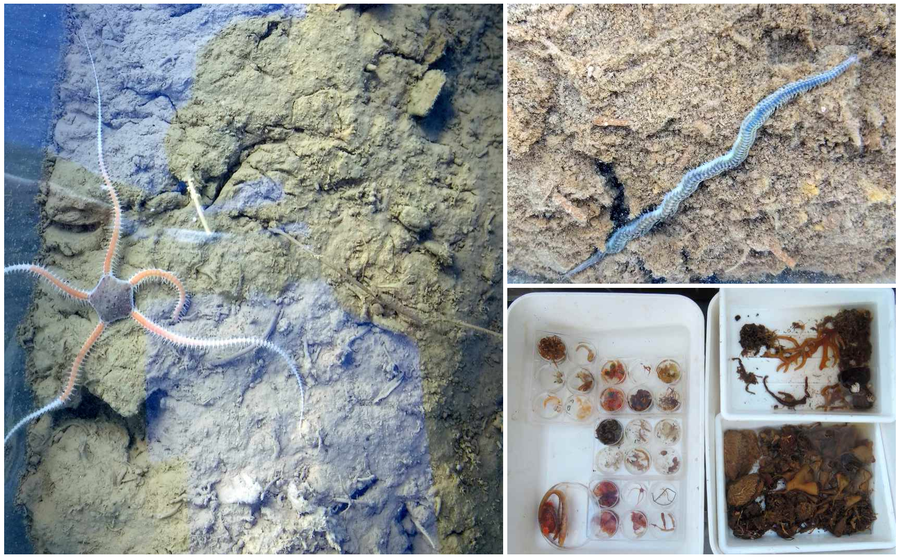
Photos by Bodil Bluhm.
“My” Arctic looks different from my fellow researchers’ Arctic. We researchers relate closely to the places where we work; we experience our study area, smell it, dig around in it, see and feel the animals that live in it, and experience the environmental conditions, the weather. This personal experience over the years, of course in combination with the samples and data we collect in the area, shapes our understanding of how the Arctic or a part of it works. In my view, this “place-based learning” is – just as in K-12 education – a critical part of system understanding.
The Chukchi Sea shelf – where Herald Shoal and Herald Canyon are located – is a special place for me and the research community, and for those that live in and around the Chukchi Sea area (man and biota). It is also important for the world’s climate. This very shallow shelf sea – no more than 50m (160ft) deep in most places – sits north of the Bering Strait between the Russian Chukotka and Alaskan west coast. To the north, it extends to Wrangel Island, where we were on this particular expedition, and to the Chukchi Borderland and deep Canada Basin.
Though the Bering Strait is narrow and shallow, the Chukchi shelf and its fauna are greatly influenced by the inflowing water from the Bering Sea, as it brings high nutrient loads and massive amounts of phytoplankton, zooplankton and also larvae of benthic (seafloor) fauna. This is why our colleagues Carmack and Wassmann in 2006 termed the Chukchi Sea an Arctic “inflow shelf” tightly linked to what happens in the upstream areas of the Bering Sea. But that is not to say that local processes do not play a role. The western Chukchi Sea is affected by the East Siberian Coastal Current that brings cold water and larval supply from the Siberian shelves, and at the shelf break, shelf-basin interactions prevail.
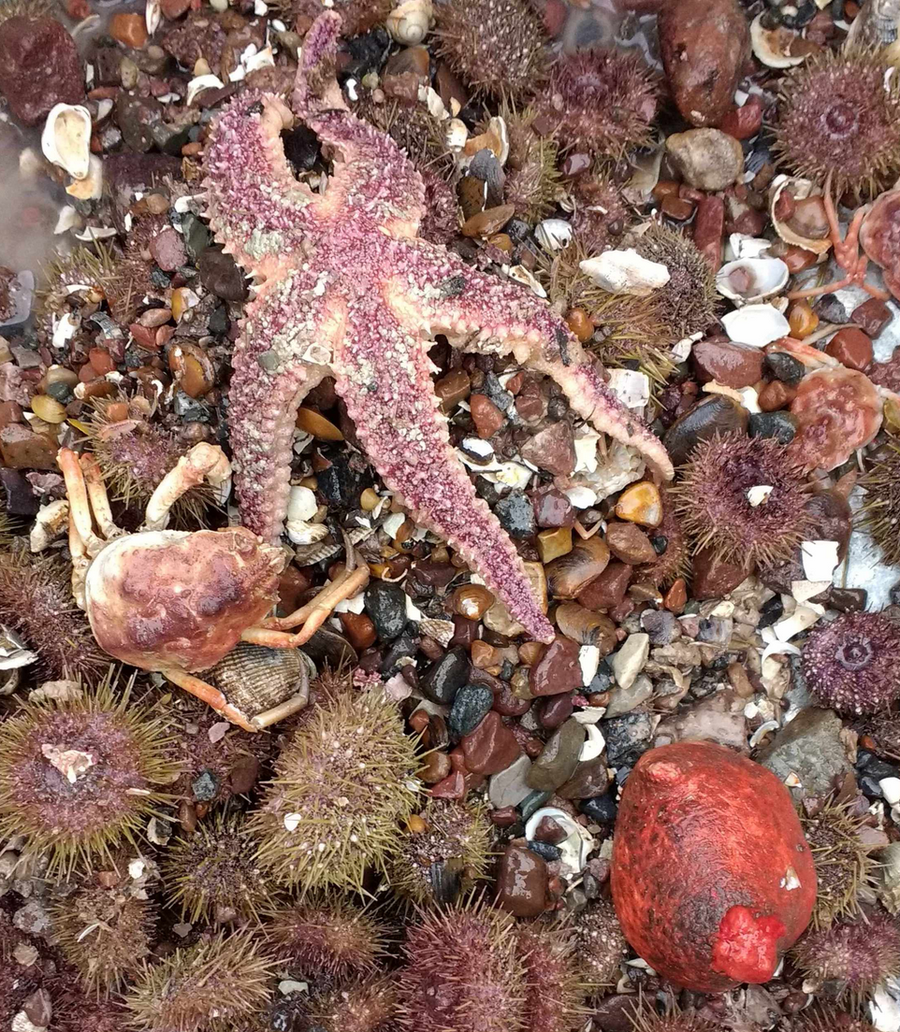
Photo by Bodil Bluhm.
We begin to sample the seafloor. We are interested in this habitat because it is in a way a time-integrating archive for what happens in the water column. Arctic benthic fauna often live many years or even decades and they eventually depend on food produced in the upper water column.
What do we do when we do research at the seafloor? Although a shallow shelf, the Chukchi seafloor is mostly beyond safe scuba diving depth. We therefore have a suite of tools that we deploy to sample the soft sediments in the Chukchi and here around Herald Shoal and Canyon. The many bivalves, bristle worms (polychaetes) and amphipod crustaceans are best sampled with a Van Veen grab, a metal box that “bites” a 0.1 square-meter (1 square-foot) piece out of the seafloor. We then sieve the sediment over a mesh and count and identify what remains on the sieve – not much different from playing in the sandbox! For the larger invertebrates such as crabs, snails, brittle stars and sea stars, we use small trawls or camera systems.
All of us planning our fieldwork up north are acutely aware of the seasonal cycle and timing of the ice cover in the Chukchi Sea. This cover is indirectly a reason why there are so many benthic-feeding mammals in the sea, some of which are described in other blogs in this series. When the ice starts to break up and melt in the spring when sunlight increases, the melt layer helps form a stable upper water column (because water of lower salt content sits on top of saltier water) where algae can bloom.
At that early time, there are few zooplankton around to graze on the bloom and, hence, much of the bloom sinks to the seafloor ungrazed. This settlement provides high-quality food for large benthic invertebrate standing stocks. In particular, we find small bivalves, polychaetes and amphipods, but also larger brittle stars, sea stars and crabs that form large biomass accumulations at the seafloor. These and other animals attract benthic-feeding mammals – first and foremost walrus, bearded seals and gray whales. Nowhere else on the planet are these majestic animals as abundant as in the Chukchi Sea!
Bodil Bluhm is a marine biologist and oceanographer focused on the ecology of Arctic seafloor and sea ice biological communities. She is interested in studying their biodiversity, food web and how the environment influences their distribution and ecology. Bodil works for The Arctic University of Norway (UiT)and is also affiliated with the University of Alaska Fairbanks.

